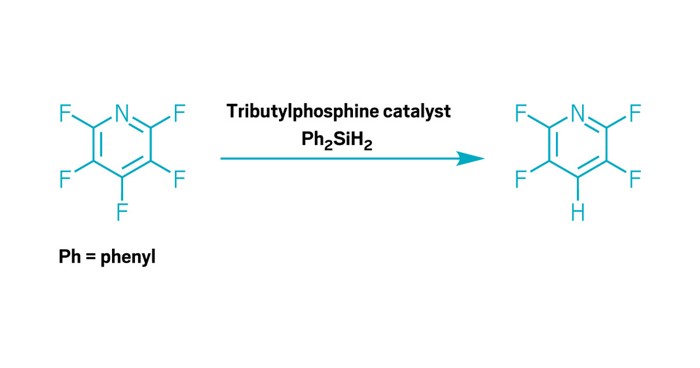Advertisement
Grab your lab coat. Let's get started
Welcome!
Welcome!
Create an account below to get 6 C&EN articles per month, receive newsletters and more - all free.
It seems this is your first time logging in online. Please enter the following information to continue.
As an ACS member you automatically get access to this site. All we need is few more details to create your reading experience.
Not you? Sign in with a different account.
Not you? Sign in with a different account.
ERROR 1
ERROR 1
ERROR 2
ERROR 2
ERROR 2
ERROR 2
ERROR 2
Password and Confirm password must match.
If you have an ACS member number, please enter it here so we can link this account to your membership. (optional)
ERROR 2
ACS values your privacy. By submitting your information, you are gaining access to C&EN and subscribing to our weekly newsletter. We use the information you provide to make your reading experience better, and we will never sell your data to third party members.
Catalysis
Spontaneously arising electric fields affect reactions on catalyst particles in solution
Finding could provide handle for controlling reactions and sorting out mechanisms
by Mitch Jacoby
June 10, 2021
| A version of this story appeared in
Volume 99, Issue 22
Electric fields arise spontaneously at the surface of solid catalysts immersed in liquids, and this common yet largely overlooked phenomenon directly affects the rates of a large class of reactions. Using a meticulous set of techniques, chemists have been able to measure this elusive effect for the first time (ACS Cent. Sci. 2021, DOI: 10.1021/acscentsci.1c00293).
Researchers have known for years that charged moieties in enzymes can cause electric fields to arise at their active sites and that the fields drive biochemical reactions. A similar process should occur at the surface of catalytic particles in solution because of the charges carried by electrons and ions that come and go during reactions. But because there’s no simple way to wirelessly monitor electrical events occurring at particles submerged in solvents, the phenomenon has remained out of sight and out of mind.
To measure these tough-to-see electric fields and study their influence on heterogeneous catalytic reactions, Thejas S. Wesley, Yuriy Román-Leshkov, and Yogesh Surendranath of the Massachusetts Institute of Technology applied techniques from spectroscopy, electrochemistry, and other areas to a test reaction—solution phase ethylene hydrogenation using a platinum catalyst.
First, the team applied infrared spectroscopy to a reporter molecule to show that the extent of spontaneous polarization at the interface between Pt and water can readily be tuned by varying the pH, a measure of ion concentration. Polarization is caused by accumulation of charge (ions) at the interface and is directly related to electric fields that arise there.
Then the group ran the reaction in a cell containing Pt catalyst particles and a Pt electrode that tracked a voltage corresponding to pH-dependent changes in polarization. They found that the reaction rate changed systematically with changes in pH.
The results show that in aqueous solution, where proton transfer causes Pt particles to become polarized and spontaneously sets up electric fields, the fields directly influence reaction rates. The group found similar results when it repeated the experiment in aprotic organic solvent. In that case, the polarization and electric fields result from electron transfer.
Controlling electric fields could provide a handle for controlling catalytic reactions, and the work provides insights into the underlying mechanisms of heterogeneous catalysis, Surendranath says.
“This is very creative work” that will inspire follow-up research, says Jahan Dawlaty, a catalysis specialist at the University of Southern California. It makes sense that electric fields should arise at catalyst particles in solution, he says, but the effect “has never been studied before in a beautiful and systematic way.”





Join the conversation
Contact the reporter
Submit a Letter to the Editor for publication
Engage with us on Twitter